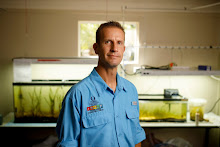I'm a marine ecologist, but most of the problems I investigate in the marine environment are actually caused by stuff humans have done on land. I.e., as the human population has grown from 1 billion around 1800 ad to 8 billion+ today, the landscape of the planet has been largely converted from natural habitats (forests, meadows, wetlands, etc.) to human-altered habitats (farms, cities, suburbs). Runoff from human-altered habitats is usually more dirty and polluted than runoff from natural habitats, thus the sprawl of human development across terrestrial landscapes is the main cause of water quality impairment in lakes, rivers, and the coastal ocean. Not all types of human-altered land surface are equally bad, though, and we could greatly reduce runoff impacts through a more deliberate accounting of the water quality impacts of different land cover types. The main part of our strategy should be leveling off population growth and preserving large amounts of unimpacted natural habitats. But we can also make a lot of gains by optimizing land cover within areas that have already been altered by humans. The image below is a rough ranking of worst to best land cover types from an environmental perspective. The more we can replace cover types on the left of the diagram with cover types on the right, the better off we'll be. There is also potential for improvements within a cover type. For example, farms and turfgrass have less impacts if they uses organic methods and follow science-based approaches for soil and water conservation.
>




No comments:
Post a Comment